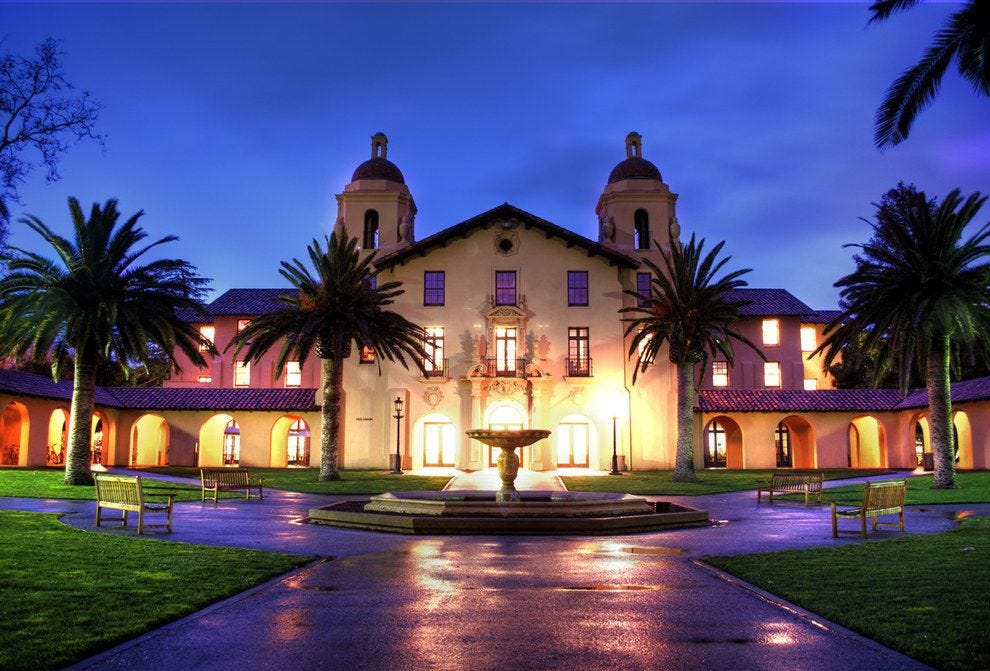
🧠 What got us thinking
20 million new students will attend universities in the United States this year. Almost all of these students went through the mystifying college application process. We decided to reach out to a few high school seniors this past week for their thoughts on the topic, and the most pressing question they asked was: “what colleges should we be applying to?”.
We had to ask ourselves this big question when applying to colleges just a few years ago. After going through the process, applying to dozens of schools, and learning more about the college admissions world, we realized that there were certain strategies students could leverage to increase their chances of attending their dream university.
We’ve developed a criteria that can help evaluate the different factors to consider when choosing between the ~5,300 colleges that the US has to offer.

📓 Criteria
💰Cost
The physical costs of attending college include application fees, tuition, room and board, food, books and supplies, and miscellaneous costs that’ll help make your college experience better.
The average cost of attendance for a university in the US is $30,500 while more expensive universities like USC and NYU can cost up to $80,000 a year. These costs depend on a variety of factors including your family’s net worth, annual income, and whether you are in-state or out-of-state for public universities.
Many colleges offer significant financial aid packages for families that make under $65,000 a year. This is why it’s imperative to fill out a very important form called the FAFSA.
It’s also important to know that some schools are actually need-aware while others are need-blind. For example, if you were a student that needed financial aid at Tufts University, your chances of getting in would actually be lower than a student that could pay the full price tag.
Lastly, keep in mind that the real value of attending college comes from the people you meet and the opportunities you receive.

🏫Academic Programs
What’s your goal of attending university?
Is your goal to conduct research under Nobel Prize winning professors or take home a 6-figure salary straight out of undergrad?
These questions are important to ask when choosing the right college. Research-geared students may benefit from studying under tenured professors, while job-driven students may benefit from a specialized program in their intended field of study, such as the M.E.T program at UC Berkeley or the Raikes School at the University of Nebraska-Lincoln.
Some incoming freshmen know exactly what they want to pursue at college, while a lot genuinely don’t. When creating your master list of universities you should have a broad idea of what to pursue but don’t need to pick a certain major or field yet. Some schools such as Berkeley also don’t allow students to declare most majors until they’ve completed prereqs.
Also remember that many of the concepts you learn tend to be similar among colleges and the main difference is the type of people you are surrounded by whether it’s professors or other students.
📏Size
Size matters!
For example, CalTech and UC Berkeley have fairly similar reputations in the field of engineering, but one has 2,000 students in total while the other has 2,000 students in just an introductory computer science class.
Size is a factor important in determining class size and the amount of resources available per student. However, large schools have wider networks and many students learn to be more independent.
🗺️Location
When choosing the location of a college, there are a few factors that are important.
A way to filter down the universities that you want to apply to includes whether you are more comfortable in a rural, suburban, or urban setting. Cornell, UC Davis, and Dartmouth are some popular rural schools, while Stanford, Princeton, and Emory University would fall under the suburban category. Urban colleges include those in major cities such as Columbia University, but also those in smaller cities like UC Berkeley and UCLA.
When it comes to larger cities, a factor that isn’t emphasized enough is safety. The surrounding areas of UC Berkeley, USC, and even Johns Hopkins (and others) have improved throughout the years, but it’s still important to remain precautious and aware of your surroundings when attending these universities.
The last thing we recommend is understanding what a university is known for based on its geography. UC Berkeley, Stanford, and even San Jose State are amazing for anything related to technology because of their vicinity to Silicon Valley. Meanwhile, schools in Boston and New York are well-known for high finance, science, and law. On the other hand, schools such as Georgetown and George Washington University tend to be great for those with political aspirations.
At the end of the day, location is incredibly important because the environment that you’re in during your college years will help inform what your interests will be in the future. A massive part of the college experience is being in the location that fits your needs best.

🏅Extracurricular Opportunities
For many college students, extracurricular activities tend to be the highlight of their college experience. Whether it’s an amazing club sports program, or a vast network of professional development organizations, make sure that your school has the organizations that you are looking to join.
Luckily, we have been able to join some amazing organizations and met some of our closest friends through them. Along the way, we have made memorable experiences that we can hold onto for a lifetime.
However, in all transparency, we have seen that the competitiveness of Berkeley gets translated to clubs as well. The competitiveness and rigor among schools tend to be carried out through academics, research programs, and even extracurricular activities.
🌟 Tiers of Universities
While you’re making a master list of universities to apply to, remember that the college admissions process is brutal and nothing is actually guaranteed. A mistake many students make is that they don’t apply to any safeties or match universities. Some also make the mistake of not applying to enough reach universities which reduces their chances of admission.
This first list should have around 20-25 universities that meet your criteria as best as possible. Try and have around 60% of them be “(high) reach” schools (low chance of admission), 30% match schools (fair chance of admission), and 10% of them be safety schools (very high chance of admission).
⏭️ Looking ahead!
In our next article we’ll discuss more about how to narrow down this initial list down to a more manageable list and also talk about why the Triple-30 percent rule is so important when applying to college.
If you have any questions you would like us to address in another edition of our newsletter please let us know by adding a comment below!
Also, if you sign up 10 friends onto this newsletter, we will give you a free hour of our time for a personalized college counseling session.
If you would like us to answer any specific personal questions, feel free to fill out this form:




This has some interesting information!